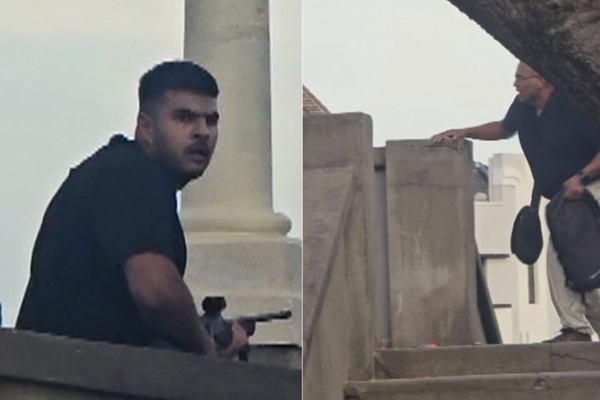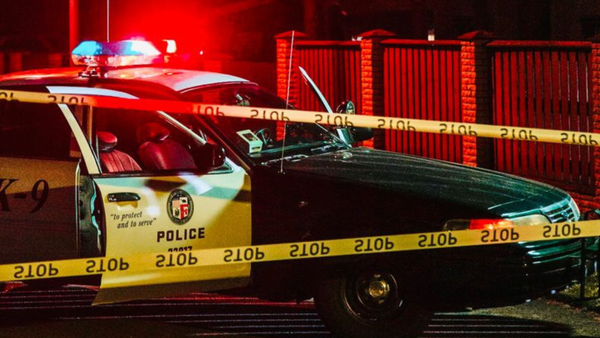
Thieves made off with priceless Napoleonic jewels during a spectacular daylight heist on Sunday at the Louvre, the world’s most-visited museum.
The museum in Paris, whose extensive collections include the Mona Lisa, was closed for a second day on Monday as police hunted for the suspects in the robbery, which has reignited a row over a lack of security in France’s museums.
How did thieves break in?
In a highly professional raid, four balaclava-wearing thieves pulled up outside the Louvre on a road along the Seine River. At about 9.30am – half an hour after visitors began entering via the front of the museum – the robbers positioned themselves at the south side of the building and used a vehicle-mounted extendable ladder to reach the second-floor balcony window.
Two of the thieves broke in through the window using an angle grinder and other power tools, gaining access to the museum’s Apollo gallery.
The Apollo gallery is home to France’s historic collection of crown jewels and was built in 1661 by Louis XIV. The items targeted by the thieves were located in the middle of the gallery.
They then smashed glass displays and grabbed jewellery.
What was stolen, and what was left behind?
Officials said eight pieces were stolen:
A necklace and a pair of earrings originally given by Napoleon I to his second wife, Empress Marie-Louise.
A diadem (similar to a tiara), brooch and decorative bow belonging to Napoleon III’s third wife, Empress Eugénie. The diadem is dotted with nearly 2,000 diamonds.
A tiara, necklace and single earring from a sapphire set worn by – among others – Marie-Amelie, the last queen of France. The necklace is adorned with eight sapphires and 631 diamonds.
The thieves dropped Empress Eugénie’s hugely valuable crown on their way out. It is covered in 1,354 diamonds and 56 emeralds, according to the museum’s website.
They also missed the Regent diamond, valued by Sotheby’s at more than US$60m (£45m).
What happened after the theft?
As alarms rang out in the museum, alerting guards, the robbers quickly left, escaping on motorbikes and leaving behind some of the equipment used in the raid. The gang tried to set fire to the vehicle before they left but they were prevented by a member of museum staff.
The robbery was completed in seven minutes, sources and officials told Agence France-Presse.
The museum announced it was closing and visitors filed out.
Forensic teams and police officers were later seen at the scene of the break-in.
Who are the suspects?
Officials said a team of 60 investigators was working on the theory that an organised crime group was behind the theft. The interior minister, Laurent Nunez, said the raid was thought to have been carried out by an experienced team.
What are people saying about museum security?
The heist has reignited a row over a lack of security in France’s museums, which are far less secure than banks and increasingly targeted by thieves.
Last month, criminals broke into Paris’s Natural History Museum, making off with gold samples worth $700,000, while thieves also stole two dishes and a vase from a museum in the central city of Limoges, the losses estimated at $7.6m.
The justice minister, Gérald Darmanin, admitted on Monday to security flaws in protecting the Louvre. “What is certain is that we have failed, since people were able to park a furniture hoist in the middle of Paris, get people up it in several minutes to grab priceless jewels, giving France a terrible image,” he told France Inter radio.
Nunez acknowledged that securing museums was a “major weak spot”. He noted that security measures at the Louvre had been strengthened in recent years, and would be reinforced further as part of a multimillion-euro overhaul of the museum.
Has this happened before?
The Louvre has a long history of thefts, possibly the greatest being by an Italian decorator who briefly worked there and stole the Mona Lisa in 1911. Vincenzo Peruggia entered the museum dressed as a museum worker. When no one was looking, he removed the painting and sneaked out. He was later arrested and the painting recovered.
Another notorious episode came in 1956, when a visitor hurled a stone at the Mona Lisa, chipping paint near her left elbow and hastening the move to display the work behind protective glass.
Sunday’s heist was the first theft from the Louvre since 1998, when a painting by Camille Corot was stolen and never seen again.
Agence France-Presse contributed to this report







